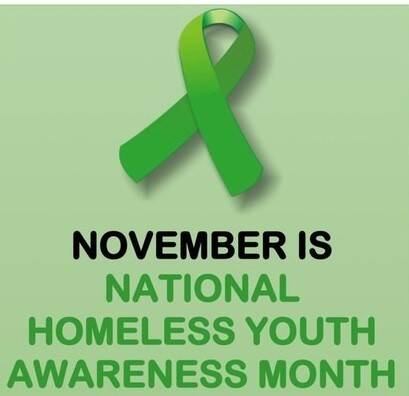Standing in the Gap: Raising Awareness During National Youth Homelessness Awareness Month
Each year, National Youth Homelessness Awareness Month reminds us that behind every statistic is a young person navigating fear, instability, and uncertainty—often alone. While youth homelessness is frequently overlooked in broader conversations about public safety and community well-being, it remains one of the most urgent and complex issues facing our schools, social-service systems, and communities.
Youth homelessness is not a distant problem. It is local, widespread, and deeply personal. And for many of these young people, their homelessness is hidden in plain sight.
The Reality Behind the Numbers
According to the U.S. Department of Education, more than 1.2 million students were identified as experiencing homelessness during the 2022–2023 school year. That number includes children and teenagers sleeping in cars, motels, shelters, campgrounds, or "couch-surfing" from place to place. It does not include the thousands who never self-report or are never identified.
The National Network for Youth estimates that on any given night, at least 4,200 unaccompanied youth are without shelter—an increase fueled by family conflict, economic instability, substance abuse in the home, mental health challenges, domestic violence, and parental incarceration. LGBTQ+ youth, in particular, face a significantly higher risk of homelessness, often due to rejection or lack of family support.
These numbers are more than statistics. They represent students sitting quietly in classrooms, young people waiting at bus stops long before dawn, teens doing homework under streetlights because they do not have a safe place to go.
Indicators Often Overlooked
Youth experiencing homelessness rarely announce their situation. Often, they work hard to hide it. Awareness begins with recognizing the subtle warning signs:
-
Chronic fatigue or falling asleep in class
-
Wearing the same clothes repeatedly
-
Avoiding discussions about home life
-
Frequent absences, tardiness, or riding multiple buses
-
Malnourishment or hoarding food
-
Heightened anxiety or withdrawal
-
Carrying large bags containing personal belongings
-
Unstable contact information or frequent moves
Educators, bus drivers, counselors, coaches, and youth-serving professionals are often the first to notice these patterns. When they do, they become the bridge to safety and support.
Why This Issue Matters for Every Community
Youth homelessness is not just a housing issue; it is a safety, well-being, and future-stability issue. Homeless youth are at significantly higher risk for:
-
Human trafficking and exploitation
-
Substance abuse
-
Dropping out of school
-
Victimization
-
Untreated physical and mental health conditions
-
Long-term homelessness
When communities intervene early—through awareness, identification, and strong support networks—lives change. Students graduate. Families rebuild. Vulnerable youth regain direction and dignity.
This is why awareness matters. Because awareness leads to action.
How You Can Make a Difference
During National Youth Homelessness Awareness Month—and every month—there are practical ways individuals, agencies, and school districts can help:
1. Understand the McKinney-Vento Act
Knowing the law ensures that homeless students receive appropriate support, transportation, and equal access to education.
2. Strengthen School Communication
Drivers, teachers, administrators, and counselors should share observations early to prevent crises later.
3. Build Community Partnerships
Local shelters, youth programs, law enforcement, and faith-based groups often have resources families desperately need.
4. Lead With Compassion
A simple conversation rooted in dignity and empathy can open the door to safety.
5. Provide Ongoing, High-Quality Training
Effective support requires consistent training for all staff—including transportation, front-desk personnel, administrators, and classroom staff.
6. Advocate for Sustainable Support
Communities should encourage leaders to prioritize youth services, mental-health resources, and accessible shelter options.
A Call to Leadership—and a Call to Action
Youth homelessness does not resolve itself. It requires communities willing to see the invisible, listen to the unheard, and extend support to the uncertain. Every adult who interacts with young people has the power to change a life.
And part of that change begins with education.
Join Today’s Training—And Access the Entire Library
Today, I am delivering a full one-hour professional development session on youth homelessness as part of Gray Ram Tactical’s Third Thursday Training series.
This series provides monthly, expert-led virtual classes on critical issues impacting school districts—including drug awareness, human trafficking, behavioral indicators, gang recognition, mental health, de-escalation, and more.
Subscribing gives your entire school district unlimited access to:
-
All live monthly sessions
-
The complete library of recorded trainings
-
Downloadable resources and tools
-
Professional development hours for staff
-
A cost-effective way to train hundreds without travel or scheduling obstacles
If your district is committed to improving student safety, staff readiness, and community awareness, this is one of the most practical and impactful investments you can make.

Add comment
Comments